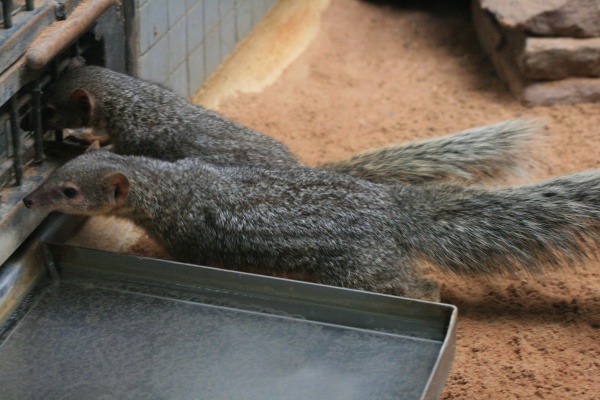Facts About Narrow-striped mongoose
The narrow-striped mongoose, known as "bokiboky" in Malagasy, is a fascinating creature native to Madagascar. This distinctive mongoose belongs to the family Eupleridae and thrives in the dry deciduous forests of western and southwestern Madagascar, particularly between the Tsiribihina and Mangoky rivers. Scientifically named Galidictis decemlineata, it was previously classified under the genus Mungotictis.
Living in matriarchal family groups, these diurnal animals exhibit intriguing social behaviors. They engage in cooperative rearing of their young and form stable social units. Their diet mainly consists of insects, but they also consume bird eggs and various small animals. When it comes to reproduction, the narrow-striped mongoose practices polygamous mating. Females typically give birth to one offspring per season after a gestation period of 74 to 106 days, although the survival rates for the young are relatively low.
Foraging for food, these mongooses dig through topsoil, ground litter, and decaying wood, primarily hunting for invertebrates like arthropods and insect larvae.
Unfortunately, the narrow-striped mongoose faces significant threats due to habitat loss. Activities such as logging and converting land for agriculture have led to its classification as endangered on the IUCN Red List. The dry forests of western Madagascar where they live are highly fragmented and under immense pressure from human activities. Slash-and-burn agriculture, logging for wild honey, and lumber extraction are major contributors to the destruction of their habitat, putting the species at serious risk.
